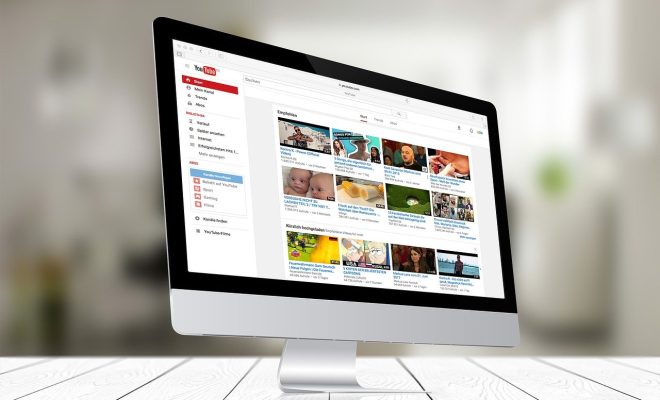Online Apps and Websites to Teach About Financial Literacy

Introduction: Understanding the Importance of Financial Literacy
In today’s rapidly changing economic landscape, financial literacy has become an essential skill for individuals of all ages. The ability to manage personal finances, budget effectively, and make informed financial decisions can significantly impact one’s quality of life. With the rise of technology, online apps and websites have emerged as valuable resources for teaching financial literacy. These platforms provide interactive, engaging, and accessible ways to learn about money management, investment strategies, and budgeting techniques. This article explores some of the best online apps and websites dedicated to educating users about financial literacy.
Educational Websites: Comprehensive Resources for Learning
Many educational websites offer extensive resources on financial literacy. These platforms provide articles, courses, and interactive tools to help users improve their understanding of financial concepts.
Khan Academy: Free Courses and Resources
Khan Academy offers a variety of free courses covering personal finance topics. The platform provides video lessons, practice exercises, and assessments, allowing users to learn at their own pace. Topics include saving, investing, credit, and budgeting.
Advantages of Khan Academy:
- Free access to a wealth of educational material
- User-friendly interface that caters to all ages
- Comprehensive coverage of financial topics
Cons of Khan Academy:
- Limited interactive features compared to dedicated finance apps
- May not be as engaging for younger audiences
National Endowment for Financial Education (NEFE): High-Quality Curriculum
The NEFE provides an array of free resources designed to promote financial literacy. Their High School Financial Planning Program offers lessons, activities, and assessments tailored for educators and students. The NEFE’s resources cover budgeting, saving, investing, and credit management.
Advantages of NEFE:
- High-quality, research-backed curriculum
- Focus on practical financial skills
- Resources suitable for both educators and self-learners
Cons of NEFE:
- Primarily geared towards educators, which may limit accessibility for individual learners
- Requires more effort to navigate compared to simpler websites
Interactive Learning Platforms: Gamified Financial Education
Interactive learning platforms utilize gamification techniques to make financial literacy engaging and enjoyable. These websites and apps often feature simulations, quizzes, and challenges that encourage users to apply their knowledge in real-life scenarios.
Mint: Budgeting Made Simple
Mint is a budgeting app that helps users track their spending and manage their finances effectively. The app provides users with insights into their financial habits and offers tools to create budgets, set savings goals, and monitor expenses. Mint also offers educational content on various financial topics, making it a well-rounded resource for financial literacy.
Advantages of Mint:
- User-friendly interface that simplifies budgeting
- Syncs with bank accounts for real-time tracking
- Offers personalized tips based on spending habits
Cons of Mint:
- Reliance on internet connectivity for functionality
- Limited educational resources compared to dedicated financial literacy platforms
Greenlight: Teaching Kids About Money
Greenlight is a financial literacy app designed specifically for children and teenagers. The app allows parents to manage their children’s allowance, set savings goals, and teach them about responsible spending and saving. Greenlight also includes educational content to help kids understand financial concepts in a fun and engaging way.
Advantages of Greenlight:
- Engaging platform designed for younger audiences
- Encourages parental involvement in financial education
- Teaches real-life financial skills through practical experience
Cons of Greenlight:
- Subscription-based model may not be accessible for all families
- Limited features for older teens looking for advanced financial education
Mobile Apps: Learning on the Go
Mobile apps have revolutionized the way individuals learn about financial literacy. These apps provide convenient access to financial education resources, allowing users to learn on the go.
Acorns: Investing for Beginners
Acorns is an investment app that helps users start investing with minimal effort. The app rounds up purchases to the nearest dollar and invests the spare change into diversified portfolios. Acorns also offers educational content on investing and personal finance, making it an excellent resource for beginners.
Advantages of Acorns:
- Simplifies the investment process for novices
- Offers educational content to enhance understanding of investing
- Encourages users to start investing with small amounts
Cons of Acorns:
- Fees may be a concern for users with smaller investments
- Limited control over investment choices compared to traditional brokerage accounts
YNAB (You Need A Budget): Mastering Budgeting Skills
YNAB is a budgeting app that emphasizes proactive financial management. The app helps users allocate every dollar they earn toward specific expenses and savings goals. YNAB also provides educational resources to teach users budgeting strategies and principles.
Advantages of YNAB:
- Encourages users to take control of their finances with a proactive approach
- Offers a supportive community for users to share experiences
- Comprehensive educational resources on budgeting
Cons of YNAB:
- Subscription-based model may deter some users
- Can be challenging for beginners to grasp all the concepts
Conclusion: Empowering Individuals Through Financial Literacy
In an increasingly complex financial world, the importance of financial literacy cannot be overstated. Online apps and websites provide accessible and engaging ways for individuals to learn essential financial skills. From comprehensive educational resources like Khan Academy and NEFE to interactive platforms like Mint and Greenlight, there is a wealth of information available to empower users in their financial journeys. By utilizing these resources, individuals can develop the knowledge and confidence needed to make informed financial decisions and achieve their financial goals. Embracing financial literacy through these innovative platforms is a step towards a more secure and prosperous future.





